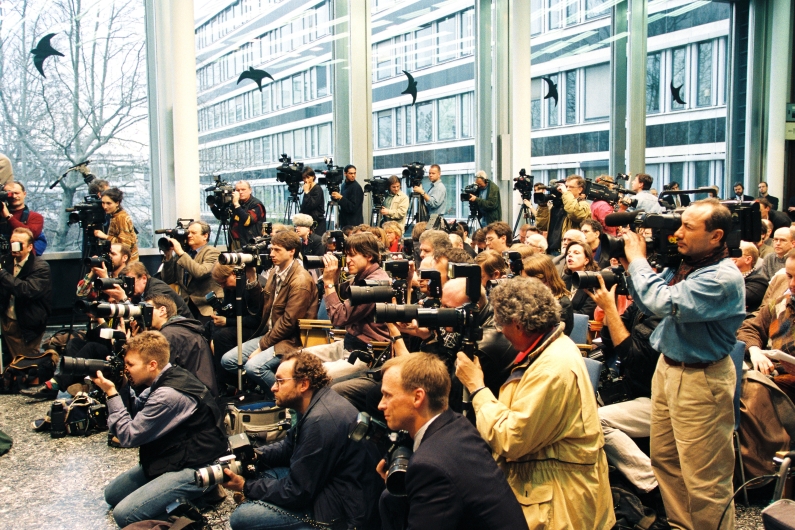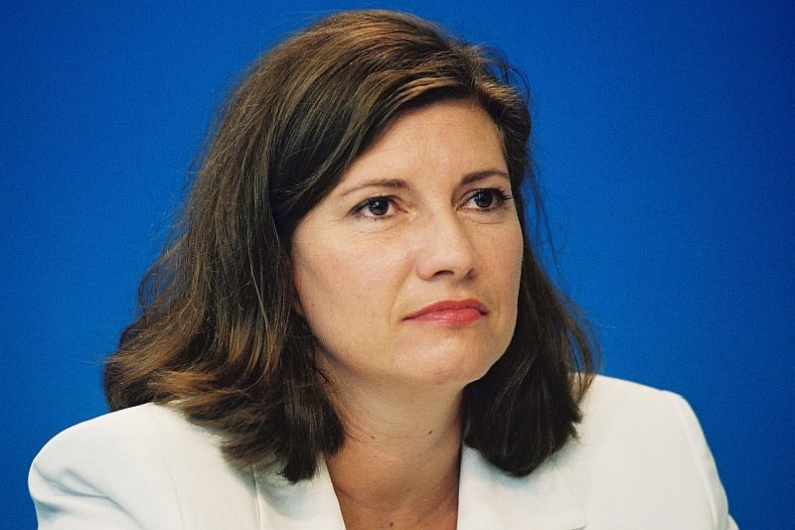The hall of the Federal Press Conference was nicknamed "Aquarium" (fish tank) because of its architecture, 2018.
Stiftung Haus der Geschichte/Benjamin Westhoff
The wooden wall with the square pattern behind the podium is as much a hallmark of the hall as the large windows, 2018.
Stiftung Haus der Geschichte/Benjamin Westhoff
Federal Chancellor Helmut Kohl (right) and GDR Prime Minister Hans Modrow issued a press statement on 13 February 1990 on the negotiations on German Unity.
Bundesregierung/Engelbert Reineke
In front of photographers, camera teams and journalists, SPD party chairman Oskar Lafontaine announced Gerhard Schröder's candidacy for chancellor on 2 March 1998.
Bundesregierung/Julia Fassbender
Charima Reinhardt was deputy government spokeswoman in the cabinet of Gerhard Schröder. At the last federal press conference in Bonn before the government's move to Berlin on 4 August 4 1999, she spoke about the relationship between government and journalists.
Bundesregierung/Julia Fassbender

